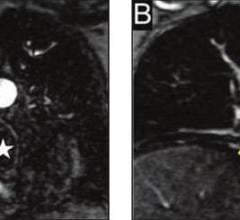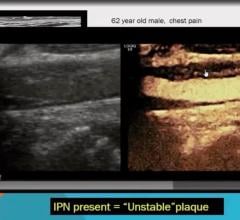
Image courtesy of Bayer Healthcare
January 6, 2015 — Bayer HealthCare announced that the U.S. Food and Drug Administration (FDA) has approved Gadavist (gadobutrol) injection for use with magnetic resonance imaging (MRI) in pediatric patients less than 2 years of age, including term neonates, to detect and visualize areas with disrupted blood brain barrier and/or abnormal vascularity of the central nervous system. Gadavist was previously approved for this use in patient populations over the age of 2. The FDA’s priority review was based on a study showing that the pharmacokinetic (PK) and safety profiles in pediatric patients less than 2 years of age were similar to that of older children and adults at standard dose (0.1 mmol/kg).
“Until this study, there were limited data regarding the use of gadolinium-based contrast agents in pediatric patients younger than 2 years of age, and there has been a significant need to better understand how they work in our youngest patients,” said Ravi Bhargava, M.D., study investigator and pediatric radiologist, University of Alberta, Edmonton, Canada. “Ultimately, it’s important for us to have safe and effective tools to help us accurately detect abnormalities and visualize areas of the central nervous system in children of all ages.”
The study enrolled 47 pediatric patients with ages spanning from term neonates to 23 months with normal renal function from nine centers across the United States, Canada and Europe. Forty-four pediatric patients were evaluated for safety and efficacy and 43 were eligible for a PK profile evaluation, including nine term neonates less than 2 months of age. Safety was a secondary endpoint and the study also included a qualitative assessment of efficacy.
The data showed that the Gadavist PK profile in pediatric patients under 2 was similar to the PK profile in older pediatric patients and adults. Investigators also observed a similar safety profile for Gadavist in this pediatric population.
The study found that the Gadavist adverse event (AE) profile was consistent with what has been seen in older populations. In one patient, vomiting was reported as a mild adverse drug reaction (ADR) to Gadavist. The most common non-serious AEs unrelated to Gadavist were cough, nasopharyngitis, rhinitis, pyrexia and vomiting. Serious AEs were unrelated to Gadavist and were reported in three out of 44 patients.
Gadavist is the U.S. brand name of the aqueous 1.0M solution of gadobutrol, a gadolinium (Gd)-based extracellular contrast agent for MRI with a macrocyclic structure.
Gadavist (gadobutrol) injection was first approved in the U.S. in March 2011 for intravenous use in diagnostic MRI in adults and children (2 years of age and older) to detect and visualize areas with disrupted blood brain barrier and/or abnormal vascularity of the central nervous system. Gadavist was further approved in June 2014 in the U.S. for MRI of the breast to assess the presence and extent of malignant breast disease.
For more information: www.healthcare.bayer.com


 August 17, 2023
August 17, 2023 







